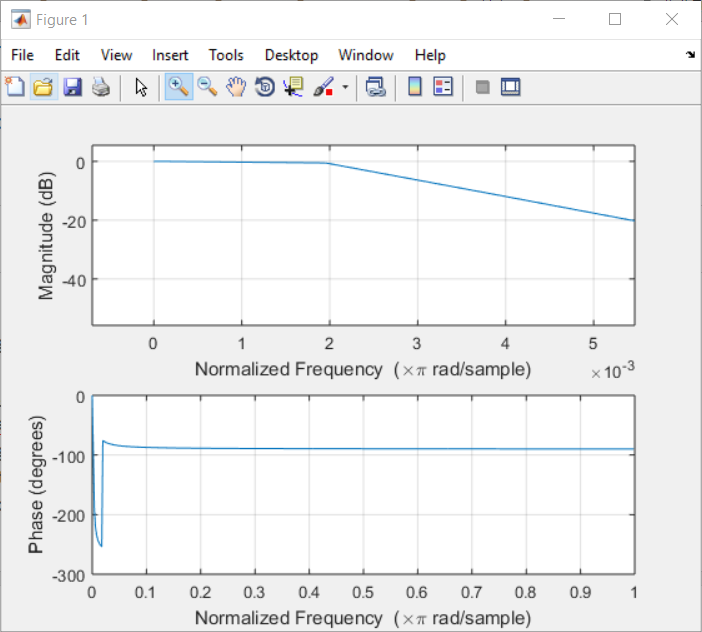I am trying to design a IIR lowpass filter. The purpose of this filter is to get pure DC from noises.
- The sampling rate is: 125Hz.
- The bandwidth of the filter: 0.2Hz.
I designed the filter with Matlab:
[b,a] = ellip(3,0.001,60,0.001);
freqz(b,a);
figure(2)
out = filter(b,a,ones(1,2000));
plot(out)
The frequency response: at 0.3Hz is -20dB, which is good for me.

The coefficients:
a = [1.000000000000000 -2.984668175804313 2.969460975930567 -0.984792292477895];
b = 1.0e-04 *[0.750233362790290 -0.747695120994728 -0.747695120994729 0.750233362790290];
My questions
From the step response, it seems that the 452th data is close to 1. Can I say that I have to wait for 451 data to get a desired DC value? By desired, I do not care much about the gain ripple on DC, meaning that it is fine for me if DC has a small gain(0.9-1.1) on it.
The filter coefficients seem to be pretty small, especially the b part. Can I implement the filter successfully on a Cortex-M4, which is a 32 bit MCU with FPU?

